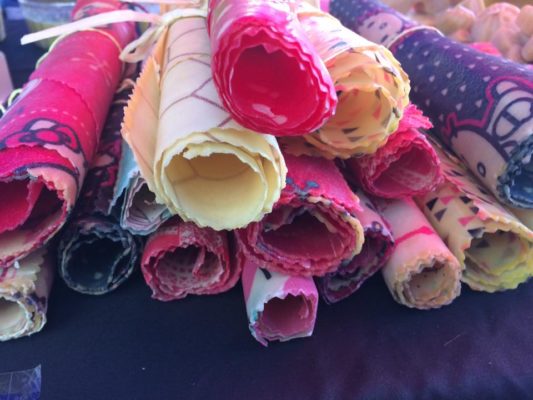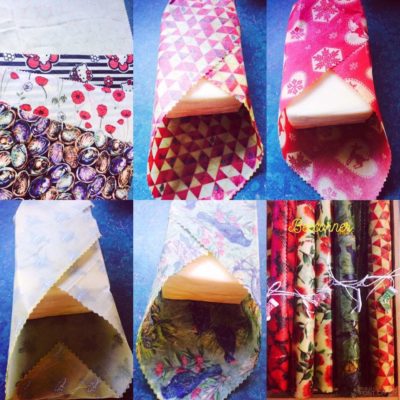You can quit Glad Wrap
Every bit of plastic that has ever been made still exists on the planet. Plastic is never fully biodegradable, it only breaks down into smaller and smaller pieces. The world makes nearly 300 million tons of plastic every year. In the first 10 years of this century we manufactured more plastic than in all the previous century.
It is estimated that 50 percent of the plastic we produce is used for mere minutes before being dumped. While most plastic goes into landfills, much of it gets into the waterways and ends up in the ocean. The estimate is that eight million tons of plastic ends up in the ocean annually.
The horrifying prediction is that by the year 2050, there will be more plastic floating around in the ocean than fish.
What can you do for the planet?
Take charge of your own rampant consumption by saying no to many plastic items. There are many great alternatives out there. When it comes to wrapping school lunches and storing leftovers in the fridge, beeswax wraps are a great choice.
Nowadays cling film, or Glad Wrap as we know it, has become the norm. This single-use product always ends up in landfill as it cannot be recycled. It has also been linked to some health concerns, especially when heated in the microwave. Yet you don’t have to use it.
How do beeswax wraps work?
Beeswax wraps can be shaped around food and dishes to seal in goodness. Beeswax wraps become sticky when warmed in the hands, which makes them easy to fold around a sandwich or seal around the top of a dish. When stored in the fridge the beeswax will harden around a bowl or piece of cheese, sealing in the goodness even more.
You can use them for storing cheese, wrapping leftovers and for wrapping sandwiches in your packed lunch.
Beeswax wraps are a great alternative to Glad Wrap for wrapping school lunches. According to an article on Stuff NZ, each beeswax wrap saves an average of 75 metres of plastic going to landfill or oceans. That is based on the amount used for wrapping a child’s school lunches for a year. Every bit helps in reducing single use plastics and it’s incredibly satisfying not to be using plastic bags or plastic wrap every day.
 To reuse your beeswax wrap simply hand wash them and air dry.
To reuse your beeswax wrap simply hand wash them and air dry.
What are wraps made from?
Our beeswax wraps are made from 100 per cent cotton and 100 per cent pure kanuka beeswax. Beeswax wraps are made by infusing pieces of cotton with a mixture of food-grade beeswax. The waxy coating makes the cloth waterproof but breathable. We use kanuka beeswax in our wraps simply because kanuka has the most antibacterial properties of all New Zealand honeys.
The life span of your beeswax food wrap depends on how often you use it and how well you look after it. Take care of your wrap and it will last around 6-12 months, or longer. Beeswax wraps can be put in compost when their time is up.
Wraps are great gifts for that someone who has nearly everything, or for someone who is just starting their first job!
